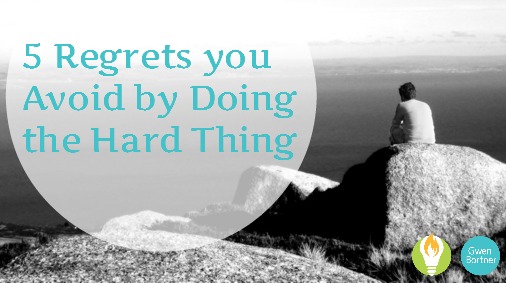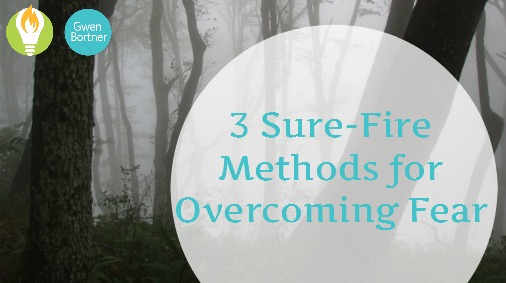
by Gwen Bortner | Training & Instruction
To be successful at most things, we have to be good learners. Unfortunately, as adults we have bought lies and falsehoods into our own minds that ultimately prevent us from achieving the best results.
I have spent the past 15 years focused almost exclusively on teaching and training adults in a variety of areas. From hobbies like knitting and skiing to “important” topics like business finance and project management, the challenges with adult learners are almost always the same.
As adults we struggle to learn new things, not because we’re incapable, but because we have bought into the lies that we continually perpetuate.
Lie #1 – Adults should be able to learn quickly.
This is based on the fact that we have experience and so we should be able to apply those experiences to new learning environment. To some degree this is true, but only if the experience actually applies to the new thing you’re learning.
Truth #1 – Children generally learn faster because learning is their full-time job.
Honestly, the most useful experience in learning quickly is continually going through the process of learning. People regularly engaged in learning new things generally learn faster than those who only try new experience occasionally. Being patient with yourself is critical to learning success; move past this lie by reminding yourself that you’re not going too slowly when you’re learning something new – you’re going at the pace that’s right for you. No matter how long it takes, if it’s worth learning then it’s worth taking your time with it.
Lie #2 – Adults shouldn’t need as much time to master new skills.
Once again, there is a grain of truth in this statement, but only if the person already has skills that are closely aligned with the new thing being learned. The reality is that the frustration of not achieving success in short order often hinders the learning process, thus extending the learning period. In other words, you are your own worst enemy in this area!
Truth #2 – Everyone requires practice, repetition, and effort when learning new skills.
Practice and repetition are the keys for every learning environment, no matter how old you are. Hearing it once, doing it once, looking at it once is never really going to be enough. Plan on investing the time to practice and improve any new skill, and the process will ultimately go more quickly. Another tip is to take good notes as you go through the process, so that you can follow those notes next time and help yourself learn more quickly!
Lie #3 – Adults can figure things out for themselves.
Although this can be true, it is rarely if ever the most effective mechanism for learning something new. Trial and error is a long standing method for solving problems in a pinch, but it is rarely the quickest or best alternative.
Truth #3 – Utilizing skilled instruction will shorten your learning curve and often provide insights you would not have discovered on your own.
Even when we work with education professionals, there will still be ample opportunity to struggle through challenges and “figure things out” for yourself. Hiring a professional instructor allows you to jump over a significant number of barriers early, so that you will find improvement and success more quickly. This allows you to focus on honing your skills instead of figuring out all the key elements on your own.
Lie #4 – Adults don’t really need to learn anything new.
If you don’t want to ever have anything change or improve in your world, this might be a true statement. But since the world around us is constantly changing, it is not really practical. If in no other area, technology is constantly changing and learning new things is the only way to keep up.
Truth #4 – To continue to be relevant, learning new things is a minimum requirement.
When we leave school we often think our learning days are over, but actually, they have just begun. The difference is not the requirement to learn, but the process and environment in which the learning takes place. Committing to be a life-long learner makes the process significantly easier (and generally makes you more interesting). Think of this time in your life as the opportunity to learn all the things they never taught you in school that you wish you knew, and to explore the topics that interest you or benefit you the most.
Lie #5 – Gaining new knowledge and understanding is all there is to learning.
Knowledge and understanding are critical to learning, but they are ultimately only the first step in the process. Knowledge in and of itself is useless; its true value comes in using it. Turn your knowledge into ACTION, and that’s where you’ll see the value.
Truth #5 – Real learning doesn’t happen until action takes place.
Without application of knowledge, the things you learn don’t have any real value. Just learning isn’t enough – the adventure begins when you DO something with all that knowledge.
Do you want to learn something new in 2017?
There are plenty of books out there that can help you improve your business, but sometimes it can be hard to sort through the sea of published volumes and find one that will work for YOUR business. Then, of course, there’s the trouble with keeping up with your reading and actually using what you’ve read to benefit your business!
That’s where my Small Biz Book Club comes in – sign up today and be notified once a month when I choose a new book to cover with the club members. You’ll have the option to sign up to participate in a read-along of that book, with actionable steps and apply-it-to-your-business notes to keep you going along the way! Enter your information into the form below to sign up.

by Gwen Bortner | Confidence, Training & Instruction
Confidence is the key to taking on new challenges, meeting your goals, and achieving success. There is no doubt that hard work and perseverance also play a critical role, but confidence is the kick in the pants that we need to get the ball rolling.
During the early years, fearlessness and the ignorance of the challenges ahead often are the tools that get us started on a path to success. But as life continues, the pitfalls or outright failures remind us that we are not indestructible. Experience teaches us that not everything will be “easy.” Ultimately our own doubts, fears and negative self-talk begin to hold us back.
But this doesn’t have to be the case. Confidence to the rescue!!
Confidence Matters
Almost everything we take on without hesitation is a result of confidence. Think of any new, different, or unknown situation or project you took on without a pause – why was that? The answer is simple: you had confidence in your abilities going in.
Everyone has SOMETHING that they are confident about. The more of those things we have, the more confident we appear to the outside world.
Confidence and success go hand-in-hand.
Confidence Is a Skill
Most people believe that confidence is a gift, given out in great quantities to only the chosen few. But confidence is a skill that can be developed and improved for anyone willing to invest in the effort.
Unfortunately, like all skills, greatly improved results are not instantaneous. Instead, it takes focused effort, practice, and a willingness invest time to see significant results. However, if you are willing to make the investment, the results will transform your life in ways you can hardly imagine.
The following are three simple steps to begin developing the skill of confidence:
1. Identify your superpower(s), skills, and other talents you already have. If your first response to this idea is, “I don’t have any superpowers,” I can assure you, you are wrong. Maybe not in the “leap tall buildings” category, but we all have some area in which we are exceptional. The problem is that it comes so naturally and easily, that we don’t think of it as unique. (If you still need help figuring this one out, get our Superpower Identification Worksheet here!)
List all of the abilities, skills and talents that you have, including the areas that you already have confidence. This is not a time to be modest. You don’t have to be the “best” or the “most” for it to be on the list. If someone else appreciates it, then it should probably be on the list. The list also doesn’t have to be complete, just give yourself 15 minutes and put as many things down as come to mind.
2. Own everything that is on the list. This sounds simple enough, but it is often the point where we struggle. True confidence is belief in yourself. Not just words, but deep heartfelt belief. If you aren’t comfortable stating your ability to another person without feeling like an impostor, then you don’t own it.
Make a notation on the list of which powers you truly own and which are works in progress. For those still in progress, ask yourself why you were able to list it, but not own it. What would it take for you to fully own that particular skill or talent?
3. Add or fully own one new skill or talent every week. This step takes intention, but only requires a few minutes every day.
If you are trying to fully own an item from the list, identify it at the beginning of the week. Pay attention to any time it you utilize it within your day or someone else acknowledges it in the course of conversation. How can that activity help you more fully own this particular skill or talent? At the end of the week, test it as we did initially in step #2 until it changes status to “fully owned.”
If you fully own everything on your list, look to add something new. We often have many more skills and talents than we can initially list in the 15 minute exercise in step #1. Make the goal to note just one new item within the week. If you can fully own it, great. If not, go through the “ownership” process until it has been fully embraced.
As the list grows, so will your confidence. With confidence you will see how you can leverage the skill and talents you already possess to solve problems and achieve success in areas in which you are less familiar.
With each win your confidence will continue to grow and the process continues.
When is a time that starting with confidence ultimately led to success for you?

by Gwen Bortner | Training & Instruction
Momentum is a familiar term in the world of physics, but is becoming more common in today’s vernacular.
The physics definition is the quantity of motion of a moving body, measured as a product of its mass and velocity. Although physics experts would probably disagree (they are scientific about these things after all), momentum is closely related to inertia and Newton’s First Law. When businesses reach a state of “stability” and thus a state of inertia, it can be hard to create forward momentum. The larger the “mass” of the business, the more difficult it becomes, but even small businesses are not immune.
Stalled, Stagnant, or Stuck
When you first get started with a business, there are all sorts of factors that contribute to its forward momentum. But as time marches on, various forms of resistance start acting upon your business and eventually you find itself in a state of being stalled, stagnant or stuck.
This condition is usually the result of one or more of the following scenarios:
- There is an obstacle or block in the “path” that you either can’t recognize or you can’t see a way to overcome.
- You’re applying energy, but it is not giving you the results you expected or desired.
- The actions that used to bring you success are now just creating a “maintenance” environment, not new opportunities.
Create Momentum
This unfavorable inertia can be counter-acted with an infusion of momentum, but it won’t happen by magic. Serious focus is almost always required to facilitate change. However, if you continually apply the process, momentum will build, and that’s what we’re after here.
1. Identify the source of the problem
Unless you understand the root cause of what is holding you back, you won’t be able to begin to address it in an effective manner. Keep in mind that this type of evaluation often requires taking a step back and looking at your business from a broader perspective.
2. Look for alternative solutions
Trying to fix the problem the same way you have fixed it in the past will not result in a new outcome. If you have employees or contractors, leverage their insights as to new and alternative solutions. Also consider getting ideas from non-competitive business owners in similar businesses or industries.
3. Evaluate results, adjust, and iterate
Once you implement your new solution, don’t just go about your merry way. Set a time to evaluate the results so you can learn from the process. If it was successful, how might you apply that to other areas of your business? If not, what can you learn from the experience, how can you adjust your situation as a result, and what can you try next?
Get in the habit of constantly repeating the cycle and your business will never lose its momentum again.
Do you feel like you’re stuck at a point of inertia in your business, but you’re having trouble identifying the root cause? Is it too hard to see a way out of this situation and get back on the road with renewed momentum? Sign up for my e-mail list and I’ll send you monthly tips to help you build momentum in your business, as well as opportunities to work with me to solve your inertia problem 1-on-1.

by Gwen Bortner | Training & Instruction
It doesn’t matter how you define it, doing the hard thing is, well, hard. But the hard thing is most often the thing that we really need to do to make a difference for ourselves or others (often both).
Regrets rarely accompany doing the hard thing and often go hand-in-hand with choosing the easy option. Although I am the first to admit that I am fundamentally lazy, I beginning to realize, much too late in life, that laziness has caused me many times to avoid the hard things that I was more than capable of doing. The real problem is that once the pattern is established, it becomes very hard to break. But change is always possible. Of course, change is one of those things that we generally classify as “hard.”
(more…)

by Gwen Bortner | Training & Instruction
Everyone has fears; however, where once they were the basis for daily survival, in a world of prosperity and opportunity most are now based on less helpful emotions.
This is particularly true when we consider the fears that are associated with our professional worlds. When we are hesitant to try something new or make a difficult decision, in most cases the root cause can be traced back to some level of fear. Whereas fear of injuring ourselves by jumping off a cliff is a healthy application of the emotion, rarely will the consequences be so dire or assured in situations associated with our businesses. As such, most successful business people have tricks and tools for overcoming fears.

by Gwen Bortner | Training & Instruction
The title of this post seems like a simple enough question, but in reality it rarely is. Whether you are an employee or self-employed it is easy to find the lines between work and personal life blurred.
There are host of sayings that point to this issue. This can be particularly true when you do work that you truly love. You find yourself just “tinkering” or working on something that will be “real quick” and suddenly hours have passed. Then, as weeks and months turn into years you realize that your outside interests are limited, if non-existent. If this sounds like you, trust me: you are not alone.








